Plants and the Lungs trail
The medicinal garden at The Royal College of Physicians in London is home to over 1,100 species of plants originating across the globe, ranging from the sunflowers to Chinese wormwood. The garden is a living collection of the history of medicine spanning the millennia, many now providing a function in modern medicine.
To coincide with our Catch Your Breath exhibition, the RCP fellows developed an extensive ‘Plants and the Lungs’ trail.
Even after the exhibition finishes on Saturday 21 September 2019, you’ll be able to visit the gardens and view RCP’s extensive living collection of plants.


We’ve transcribed the trail handout below for easier access.
Plant-derived medicines have been used for centuries for the treatment of breathlessness and disorders of the respiratory system. Tuberculosis was once the major lung disease requiring therapy but now disorders such as asthma and chronic obstructive pulmonary disease (COPD) are more common in the developed world. This leaflet highlights some plants growing in the Medicinal Garden which have been used for these conditions in the past or have given rise to effective modern medicines for respiratory disorders.
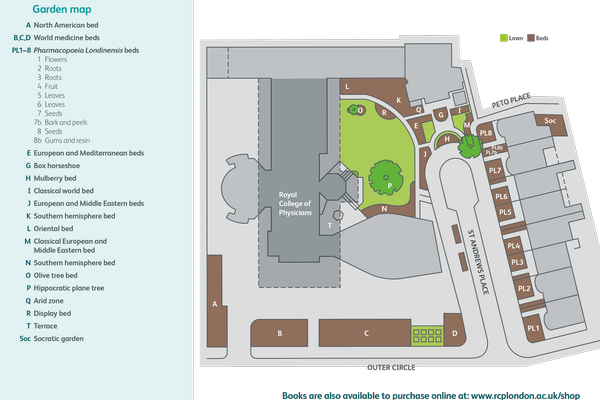
Anticholinergic bronchodilators
These act by relaxing smooth muscle int he bronchial tree by blocking the action of acetylcholine in the parasympathetic nervous system, thus giving effective relief from the breathlessness of asthma and COPD.
Atropa belladonna (Deadly nightshade)
Garden location: Bed J
The major active principle is atropine but there are also smaller quantities of the similar substances hyoscine (scopolamine) and hyoscyamine. All three are toxic in overdosage but all have been used for the treatment of asthma and COPD, for which atropine (as the methonitrate salt) is still in clinical use, as are modern derivatives such as ipratropium bromide.
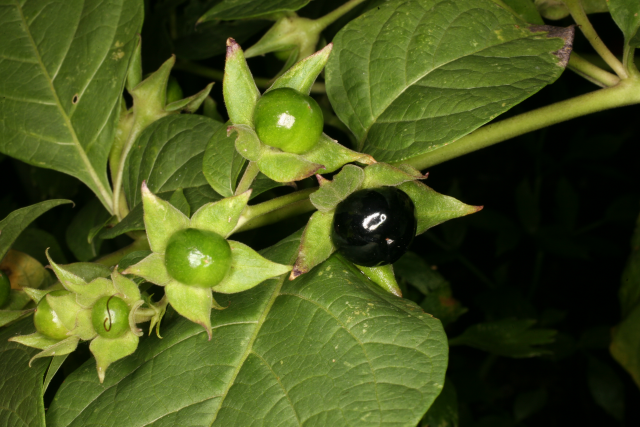
Courtesy of Dr Henry F. Oakeley
Datura stramonium (Thorn apple)
Garden location: Bed O
Contains hyoscine. It was the major constituent of ‘asthma cigarettes’ such as Potter’s asthma cure, available in the UK until the early 1980s.
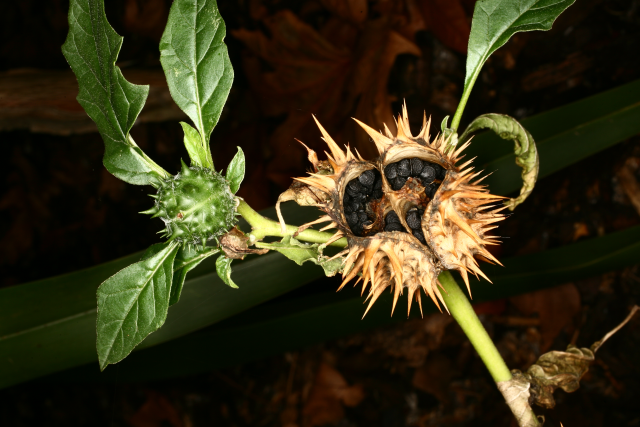
Courtesy of Dr Henry F. Oakeley
Sympathomimetic bronchodilators
These act by stimulating the sympathetic nervous system, leading to relaxation of the airways, either direectly (ephedrine), or indirectly by inhibiting the breakdown of endogenous stimulants (xanthines).
Ephedra sinica
Garden location: Bed Q
Ephedra is the major active constituent of Ma Huangm a traditional Chinese medicine for asthma. The active principle, ephedrine, was identified in 1887. In the early 20th century it was introduced in the West, where it was also studied as an inhalant. Pseudoephedrine is a better-tolerated derivative and is still available as a nasal and bronchial decongestant.
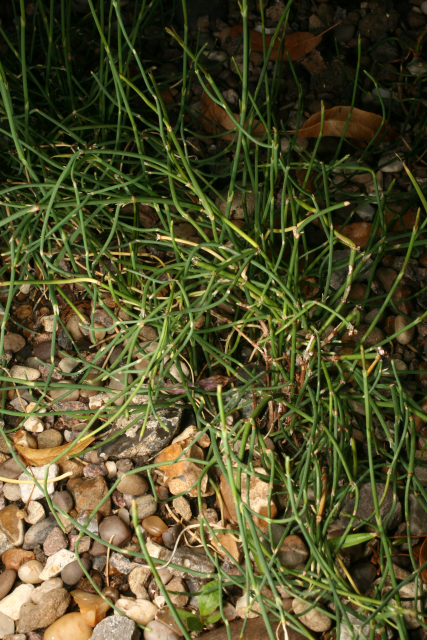
Courtesy of Dr Henry F. Oakeley
Camellia sinensis (Tea)
Garden location: Terrace
Coffea arabica (Coffee)
Garden location: Terrace
Tea, coffee and cocoa contain variable quantities of the xanthines theophylline, caffeine, and theobromine. These inhibit the enzyme phosphodiesterase (which causes bronchial spasm) leading to a weak bronchodilator effect. Recently, a specific inhibitor of one of the subtypes of phosphodiesterase (PDE4) has been developed for the treatment of COPD. Theophylline also has mild anti-inflammatory properties. In 1860 the English physician Dr Hyde Salter advocated the use of strong coffee for the treatment of asthma.
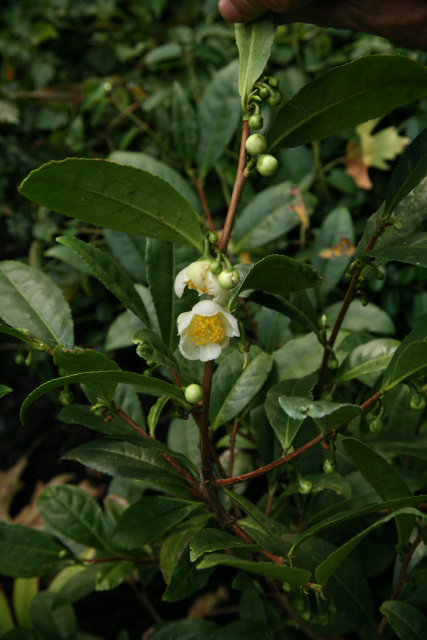
Camellia sinensis
Courtesy of Dr Henry F. Oakeley
Coffea arabica
Courtesy of Dr Henry F. Oakeley
Anti-allergics
Ammi visnaga (Toothpick plant)
Garden location: Bed E
Extracts from this Mediterranean plant have traditionally been used to treat renal colic. In the 1960s an English researcher, Roger Altounyan, discovered an effective anti-asthmatic ingredient, sodium cromoglicate, derived from it. This was not a bronchodilator as he expected but an agent which blocked the allergic response which caused an asthmatic attack.
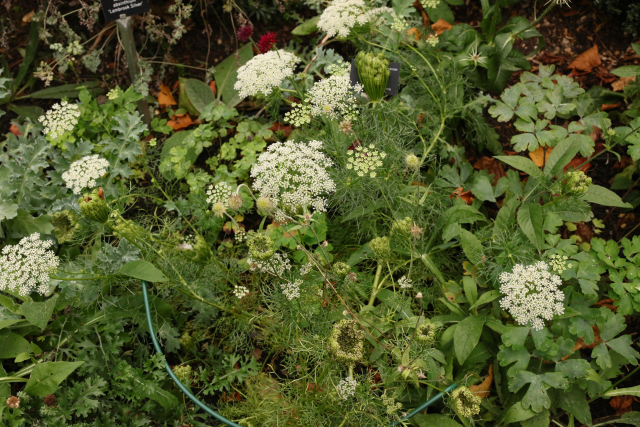
Courtesy of Dr Henry F. Oakeley
Breathing depressants
Sometimes patients with severe lung disease become so breathless that they become distressed and exhausted by the effort of breathing.
In these circumstances the rate of breathing can be suppressed to make the patient more comfortable, even if this impairs the uptake of oxygen and the removal of carbon dioxide. Opiates are the most effective in this regard.
Papaver somniferum (Opium poppy)
Garden location: Beds G, R, PL 8
Opium from the sap has been used for pain relief for over 5,000 years. The active principles are morphine and codeine. Both are effective depressants of respiration. Morphine also relaxes the pulmonary blood vessels, and can help breathlessness caused by pulmonary oedema. Codeine is still used as a symptomatic cough suppressant.

Courtesy of Dr Henry F. Oakeley
‘Therapeutic smoking’
Nicotiana tabacum (Tobacco)
Garden location: Beds R, PL6
Nicotiana rustica (Wild tobacco)
Garden location: Bed O
From the time of its introduction to Europe in the 16th century until the early 19th century many doctors and patients perceived tobacco to be beneficial for their lungs. Smoking it (and cannabis) was thought by many to help asthma and bronchitis, possibly because the irritant effect helped patients to clear their phlegm. Now we know that smoking to leads to COPD and lung cancer. The addictive substance in tobacco is nicotine.
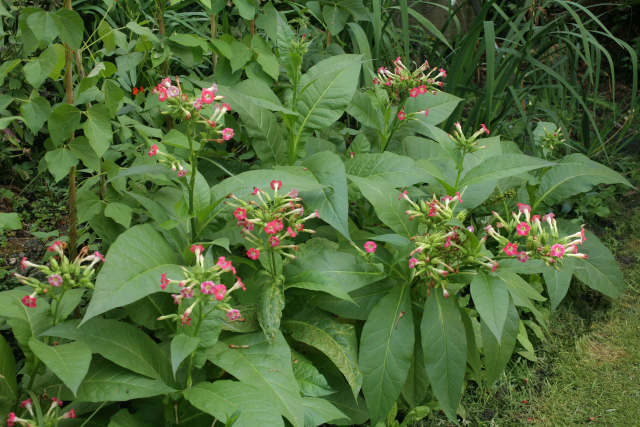
Nicotiana tabacum
Courtesy of Dr Henry F. Oakeley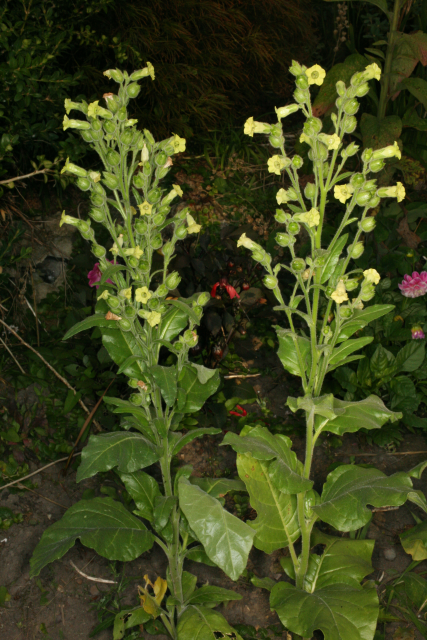
Nicotiana rustica
Courtesy of Dr Henry F. Oakeley
Lobelia tupa (Devil’s tobacco)
Garden location: Bed K
Lobelia contains an alkoloid, lobeline, which is a mild respiratory stimulant and bronchodilator. It has structural similarities to nicotine and has been used as a smoking cessation aid.
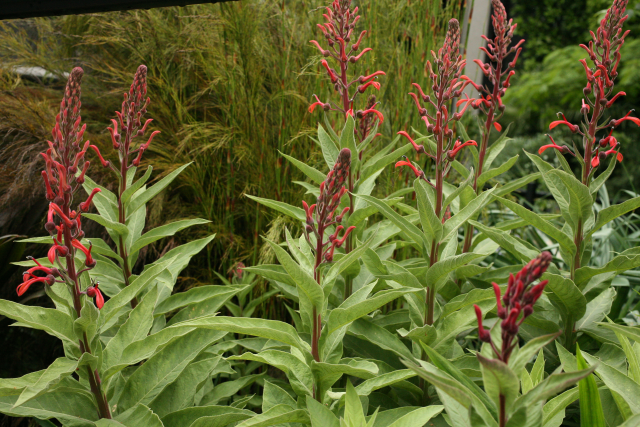
Courtesy of Dr Henry F. Oakeley
Tuberculosis
Tuberculosis of the lungs causes over 1 million deaths worldwide every year.
In Victorian times it developed romantic connotations partly because of the symptoms (slimness, pale skin and hectic flushing) and also becase of the glamour of some of the people with the disease (Keats, Chopin, the Brontës). In reality, it causes fever, sweats, a productive cough (often bloodstained), disability, breathlessness and death. A variety of plant remedies have been tried over the centuries, most of them ineffective, including balsam, myrrh, and eucalyptus.
Tulbaghia violacea (African wild garlic)
Garden location: Beds K, N
This attractive plant has traditionally been used in South Africa for the treatment of colds, asthma, and pulmonary tuberculosis.
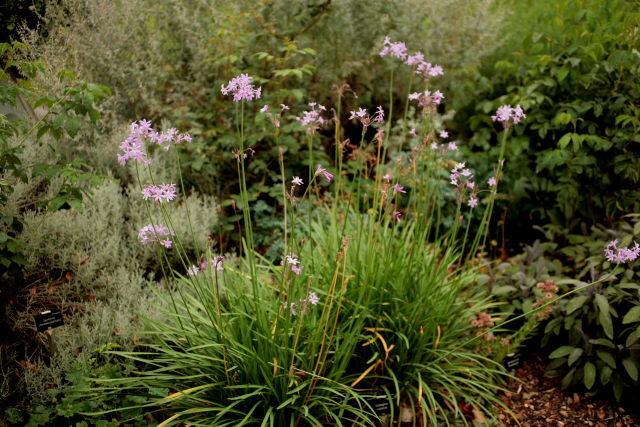
Courtesy of Dr Henry F. Oakeley
Pelargonium sidoides (Umckaloabo)
Garden location: Bed N, Pot
Another plant from South Africa, this one is traditionally used to treat bronchitis in children. A constituent of a patent medicine marketed in the UK in the first half of the 20th century as a treatment for TB, it is still available as a mildly effective cough and cold remedy. Recent testing has shown some antibacterial effects including modest activity against the TB bacillus.
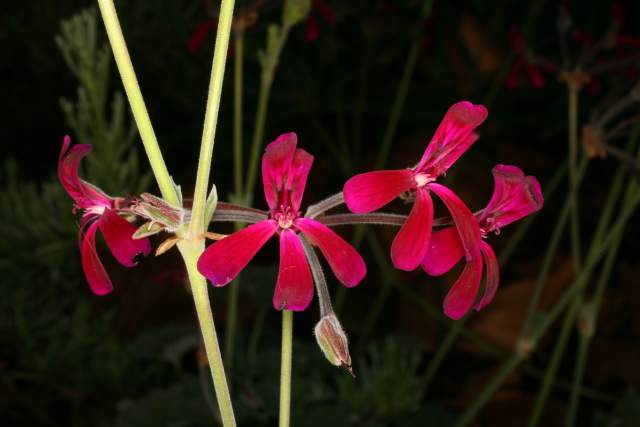
Courtesy of Dr Henry F. Oakeley
Non-respiratory causes of breathlessness
Plant-based medicines have also been used successfully for non-respiratory causes of breathlessness, for example heart failure.
Digitalis purpurea (Foxglove)
Garden location: Beds E, C, G
Digitalis lanata (Woolly foxglove)
Garden location: Bed O
The medicine, digoxin, extracted from the leaves was the first effective treatment for the breathlessness of heart failure. It acts by increasing cardiac output, and restoring a normal pulse when heart function is disrupted by irregular rhythm disorders.
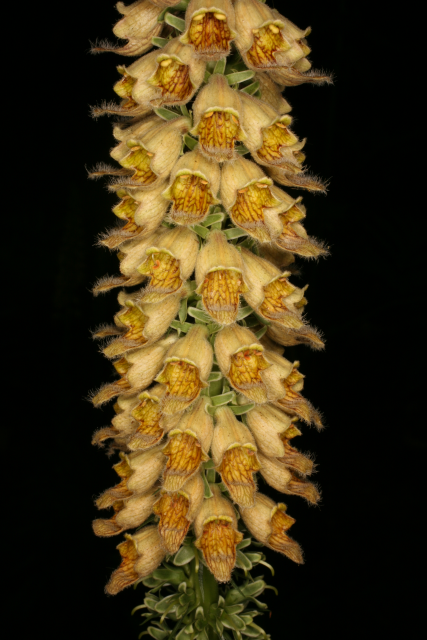
Digitalis lanata
Courtesy of Dr Henry F. Oakeley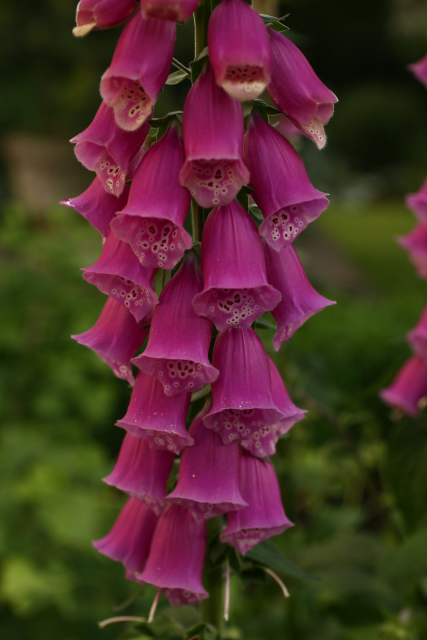
Digitalis purpurea
Courtesy of Dr Henry F. Oakeley
Guided tours
Tours of the Medicinal Garden are given by fellows of the RCP on the first Wednesday of the month at 2pm (March-October). No charge is made for the tours; however, donations towards the garden’s upkeep are gratefully received. Visitors who wish to see the Medicinal Garden on their own are welcome to visit 9am-5pm weekdays.
A free tour of the RCP museum is also available at 1.30-2pm (before the monthly garden tour); see our website for details.
How to book
Guided tours are available to individuals and groups. To book please call one of the numbers below:
Individuals (monthly tour)
Tel: +44 (0)20 3075 1649 (ask for reception)
Group tours
Tel: +44 (0)20 7034 4901
Email: [email protected]



